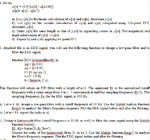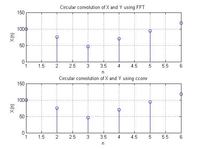joshhtfld
Newbie level 3
I have tried a couple ways and am not truthfully understanding what I am doing. I need to compute the linear and circular convolution (FFT 128 point) of
x1[n]=(0.9)^n*(u[n]-u[n-100]);
x2[n]=u[n]-u[n-7];
please explain, I really like to understand what I am doing and the reasoning behind it
Thanks
x1[n]=(0.9)^n*(u[n]-u[n-100]);
x2[n]=u[n]-u[n-7];
please explain, I really like to understand what I am doing and the reasoning behind it
Thanks

